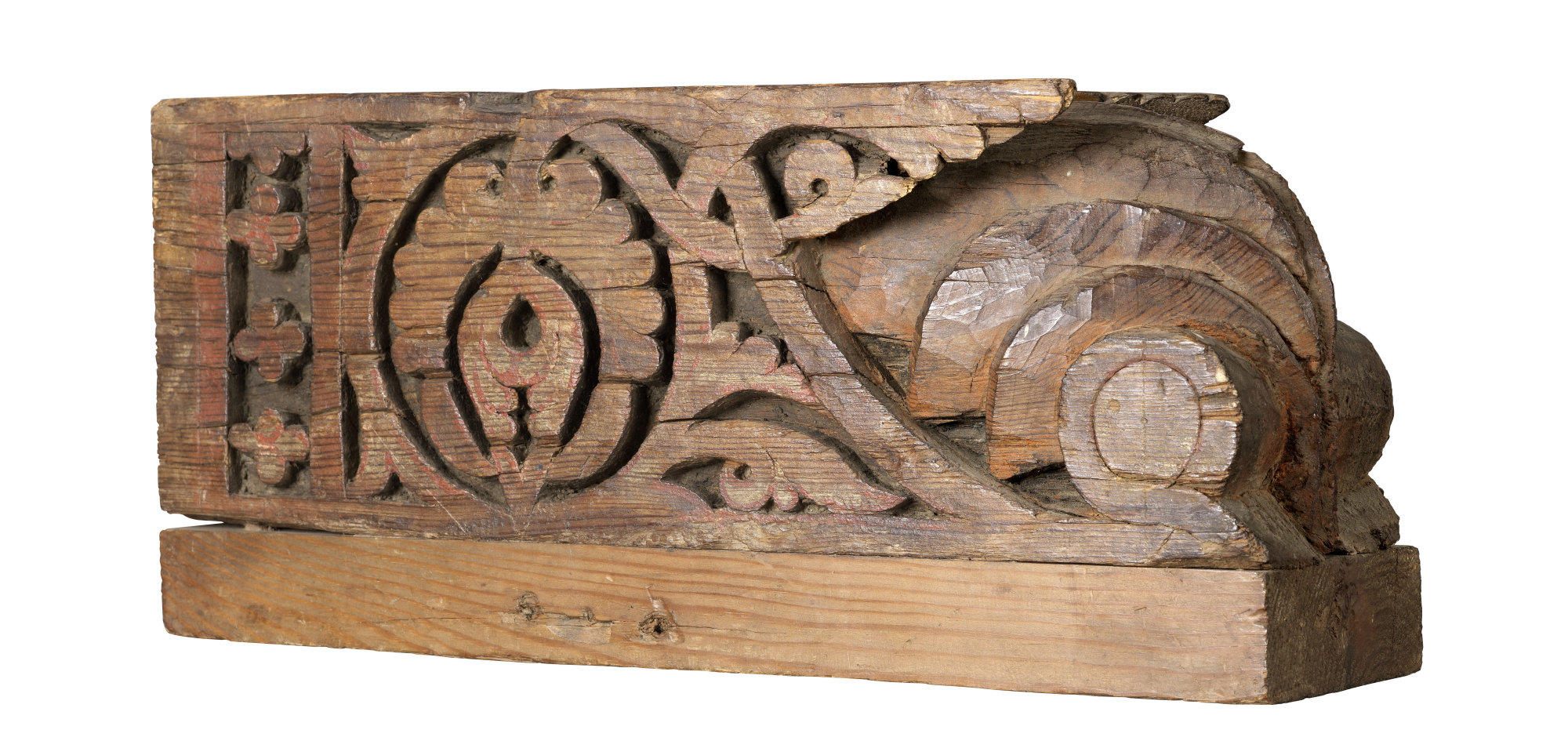Click on the image to zoom
Six corbels
- Accession Number:AKM719
- Place:Toledo, Spain
- Dimensions:42 cm
- Date:1200s-1300s
- Materials and Technique:Oak, carved
The Mudéjar style of the Iberian Peninsula grew out of a synthesis of Muslim, Christian, and Jewish artistic idioms beginning in the twelfth century and continuing through the end of the fifteenth century, when the Mudéjars, that is, Muslims who had remained in the region after the Reconquista but who continued to practice their own religion, were forced to convert to Christianity. During the mediaeval period, Mudéjar artisans excelled in the crafts of woodwork, plaster work, pottery, metalwork, and textile production (Ecker 2004, p. 58). This beautifully carved wooden corbel (one of two in the collection) contains design combinations reminiscent of other architectural elements attributed to Toledo. Split and curved palmettes, for example, appear in corbels in the collection of the Hispanic Society of America, New York (Ecker 2004, pp. 64-65 and 147-48 [no. 56, inv. no. D51-D60]). Heather Ecker notes that the combination of the curved palmette motif (which “sweeps back from the top volutes like the prow of a ship, in Spanish, canecillos de proa or quilla, between two vine tendrils that project outwards as points”) and the appearance of multi-petalled rosettes distinguish these examples as typical of Toledo rather than Granada as a place of production (ibid., p. 147). Further comparative examples can be found in the David Collection, Copenhagen (von Folsach 2001, p. 271 [fig. 437, inv. no. 46 a-b/1999]). Traces of polychrome decoration suggest that such architectural elements were once painted in colour.
References
Heather Ecker, Caliphs and Kings: The Art and Influence of Islamic Spain. Washington, D.C.: Arthur M. Sackler Gallery, Smithsonian Institution; New York: Hispanic Society of America, Seattle, WA: Distributed by University of Washington Press, 2004. ISBN: 9780295984216
Kjeld von Folsach, Art from the World of Islam in The David Collection. Copenhagen: Davids Samling, 2001. ISBN: 9788788464214
Note: This online resource is reviewed and updated on an ongoing basis. We are committed to improving this information and will revise and update knowledge about this object as it becomes available.


